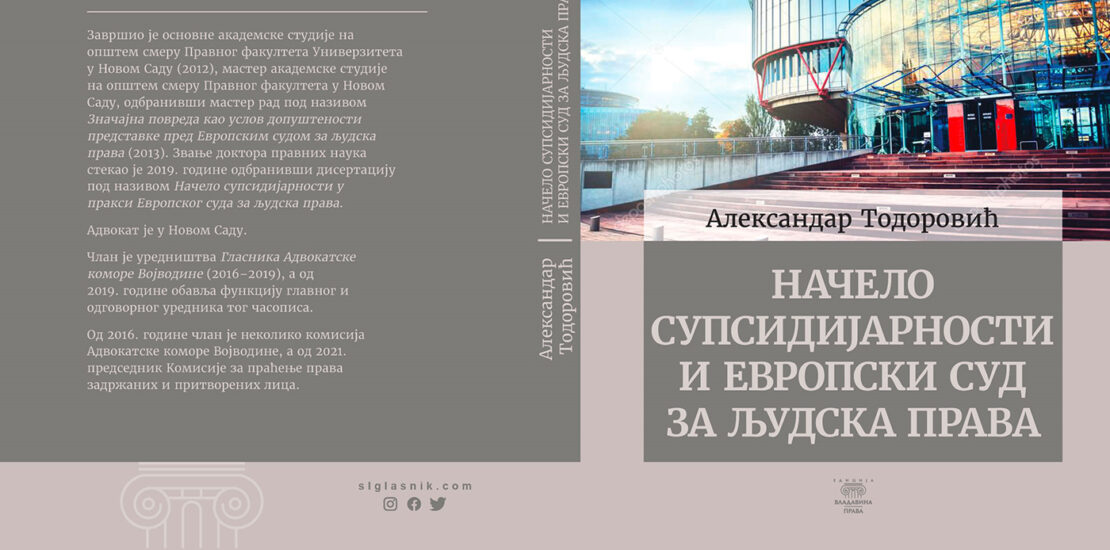The Principle of Subsidiarity and the European Court of Human Rights

A member of our team, Aleksandar Todorović, Ph.D. has published a monograph entitled “The Principle of Subsidiarity and the European Court of Human Rights”.
The monograph analyzes one of the most important principles guiding the ECtHR in its decisions on human rights.
You may read the preface below:
European Court of Human Rights (EctHR) is the oldest international forum for the protection of human rights. The opinion that the European Court of Human Rights is the most important and most successful court of its kind has become, in recent decades, a matter of uncontested consensus in legal theory. There are two main commonly cited reasons for such success: the high level of confidence that the Court enjoys from the Member States and the persons who turn to it, and the great influence that the jurisprudence of that Court has on the overall development of human rights on the European continent, and beyond.
The greatest impact of the EctHR can be found in the domain of the establishment of standards for the protection of freedoms and rights guaranteed by the Convention, which were subsequently implemented at the national level of the Member States. In this respect, the importance of the Court’s practice goes beyond the sum of individual protection provided to each of the persons whose application in the previous history of the Court has been upheld. The current case law, which gave rise to development of human rights standards, necessarily plays a vital role in human rights argumentation of both national legislators and national courts.
Bearing in mind the reasons for the Court’s success mentioned above, it seems that there is a delicate position that the Court holds within the control mechanism of the Convention. On the one hand, the Court needs to intervene into national legal orders of the Member States (directly or indirectly) when those States fail to secure guaranties provided in the Convention. On the other hand, the Court must justify a high degree of confidence among the Member States, who constituted the Court and whose consent made the Court a prominent actor on international stage. Member States are sensitive in terms of preserving their own sovereignty. When the Court exceeds the limits of intervention to which States are “accustomed” they call upon the Court to limit its “interventionism”.
In this way, a sort of a vertical tension is created between the Court and the Member States, which is why the Court is compelled to balance its decisions between the requirement to provide efficient and effective protection of human rights, on one hand, and demands that its intervention into national legal orders should be reduced to an acceptable margin, on the other.
The mechanism used by the Court in the process of such balancing is, in fact, the principle of subsidiarity. This principle has been designated by the Court as one of the fundamental and supreme principles of its functioning, and as a principle that is inherent to the protection mechanism established by the Convention. Due to its specific position the Court has used the principle of subsidiarity both as a shield and as a sword. As a shield when required to limit the scope and method of its functioning thereby protecting itself from the criticism of the Member States. As a sword, when grappling with the manifest injustice on national level in order to intervene and provide effective protection of human rights.
The aim of this book is to examine all the relevant issues raised in relation to this important principle of the functioning of the Court.
This book will firstly examine subsidiarity and how it evolved outside the control mechanism of the Convention, in order to be able to compare it with subsidiarity within the Convention’s control mechanism. Furthermore, the research covers issues of frequency and consequences of the principle of subsidiarity in the Court’s jurisprudence. The goal of the research is also to detect legal arguments and legal concepts used by the Court to express the principle of subsidiarity. The task is to examine whether and when these concepts and arguments are used as a shield or as a sword.


